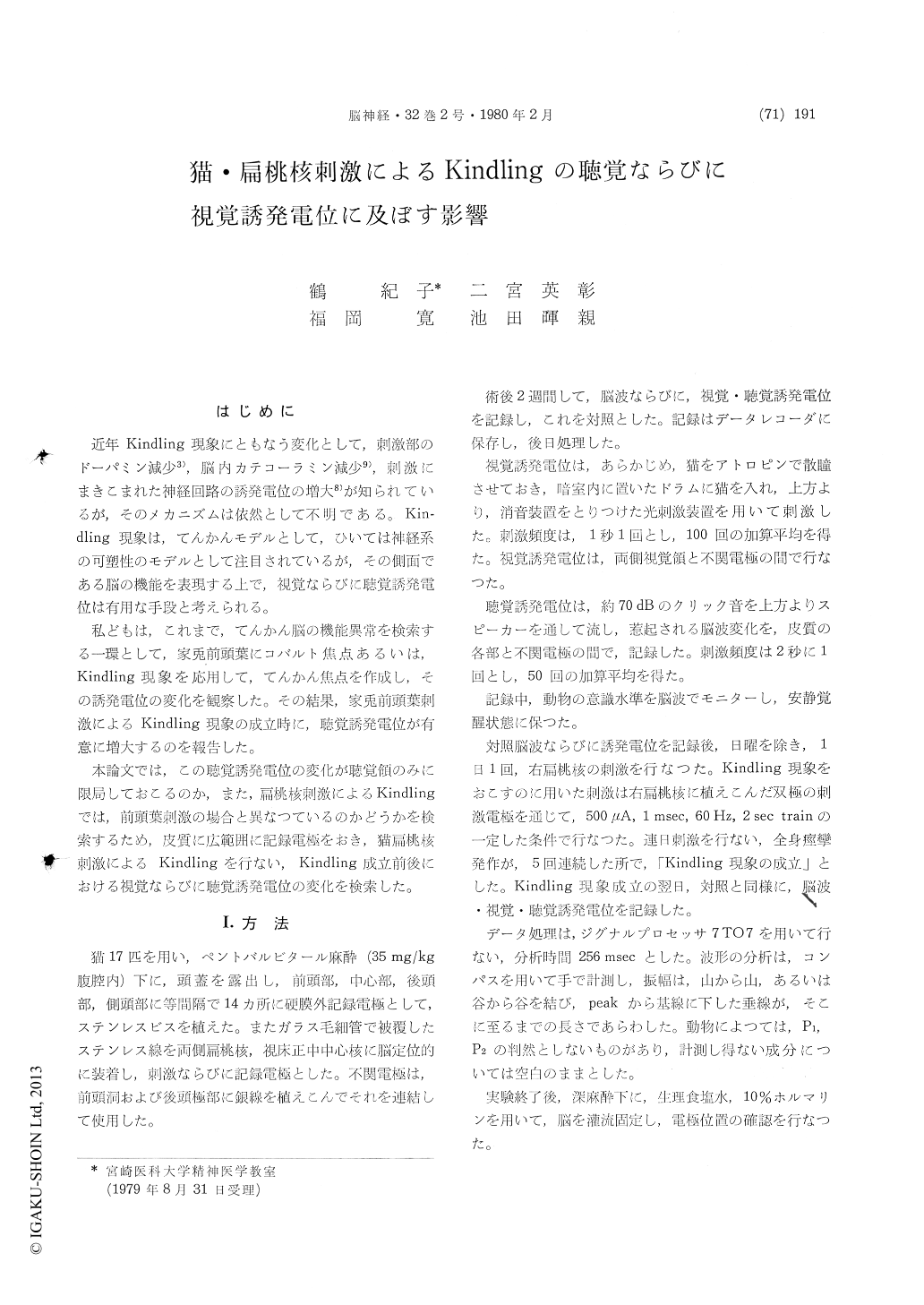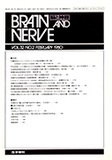Japanese
English
- 有料閲覧
- Abstract 文献概要
- 1ページ目 Look Inside
はじめに
近年Kindling現象にともなう変化として,刺激部のドーパミン減少3),脳内カテコーラミン減少9),刺激にまきこまれた神経回路の誘発電位の増大8)が知られているが,そのメカニズムは依然として不明である。Kin—dling現象は,てんかんモデルとして,ひいては神経系の可塑性のモデルとして注目されているが,その側面である脳の機能を表現する上で,視覚ならびに聴覚誘発電位は有用な手段と考えられる。
私どもは,これまで,てんかん脳の機能異常を検索する一環として,家兎前頭葉にコバルト焦点あるいは、Kindling現象を応用して,てんかん焦点を作成し,その誘発電位の変化を観察した。その結果,家兎前頭葉刺激によるKindling現象の成立時に,聴覚誘発電位が有意に増大するのを報告した。
Daily electrical stimulation (500μA, 1 msec, 60 Hz 2 sec train) of amygdaloid complex in cats induced a generalized convulsion (kindling phe-nomenon). The visual and auditory evoked re-sponses were examined after the completion of kindling phenomenon. There was a marked change in the auditory evoked response (AER) between the control and kindled group, but not in the visual evoked response. The change was an in-crease of short-latency-component of AER. The change of AER had some topological extent of the brain, and it was the most distinguished on the frontal cortex. 1) In the control group, on the right ectosylvian cortex (primary auditory cortex of stimulation side), the first positive component, P1 (15.0±2. 3 msec in latency, 5.7±3.7μV in amplitude) the first negative component, N1 (33.9±6.7 msec in latency, 6.3±2.8μV in amplitude) and the second positive component, P2 (72.0±10.8 msec, 15.7±12.5μV) of AER were recognized. In the kindled group, the first positive component, P1´ (15.4±2.0 msec, 8.7±5.5 μV), the first negative component, N1´ (31.7±4.7 msec, 13.7±6.2μV) and the second positive component, P2´(72.0±10.8 msec, 15.7±12.5μV) were recognized. A shortening of the latency of the second positive component and the amplification of the amplitude of the first negative component were significant. 2) On the left ectosylvian cortex (primary auditory area of contralateral side) the change of the latency of N1 component of AER was noticed. 3) The changes of AER were recognized widely on the cortex. The prominent changes were on the anterior and the middle suprasylvian cortices. 4) There was not a change in the visual evoked response.
These results suggest the hypersensitivity of the auditory system concomitant with the accomplish-ment of kindling phenomenon.

Copyright © 1980, Igaku-Shoin Ltd. All rights reserved.


